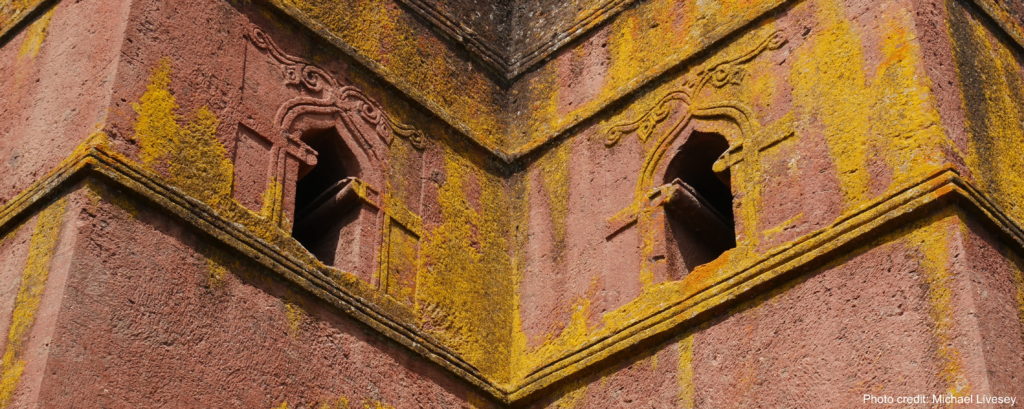
Benoit Siberdt
‘Civil war onset is an event that occurs at the polity-level. In that sense, onset refers to the dynamics and actor constellations at the moment of transition from pre-war to wartime. That is, when politics becomes a military contest between organised armed actors…’
The Cold War has left a remarkable trace on common conceptions of civil wars and insurgencies, often informed by famous doctrines by Lenin, Mao Zedong, or Che Guevarra. That period was in fact characterised by numerous Communist guerrilla wars against sitting governments. These conflicts were typically launched by revolutionaries, who, at the time of onset, disposed of limited military capacity, often in the rural periphery of the state, and attempted to attract civilian support and cooperation in their respective military challenges to state sovereignty. Well-known examples include the civil wars in Vietnam (1960-1975), India (1989-ongoing), the Philippines (1972-1992), El Salvador (1980-1992), Peru (1980-1996), Colombia (1978-2016), or Ethiopia (1978-1991).
However, many civil wars since the end of World War II began in significantly different ways, which have been largely overlooked. For example, the civil war in East Timor (1975-1999) was triggered by Portgual’s rapid withdrawal from its colony which led to fighting between local political groups. Similarly, the Greek civil war (1944-1949) followed the end of the German occupation, and its onset was characterised by the mobilisation of several Communist and Nationalist groups. In Afghanistan, the resignation of the last Communist leader, Mohammad Najibullah in March 1992, triggered the mobilisation of numerous mujahideen groups which initiated fighting in Kabul to seize power.
Other civil wars follow coups d’état. The Guinea-Bissau civil war (1998-1999) started when Brigadier-General Ansumane Mané mobilised troops under his command in a coup d’état against the regime in the capital Bissau. The Biafran civil war (1967-1970) is another well-known example. In May 1967, high-ranking Igbo military personnel declared the independence of the Republic of Biafra. Then the army split in two parts: the federal army, and the secessionist forces composed of a large part of the former Nigerian officer corps.
Lastly, some civil wars result from the escalation of insurrectionary protests. This form of civil war onset has been especially common following the Arab Spring in 2011. Recent examples include pro-democracy protests in several cities which led to the civil wars in Syria (2011-ongoing) and in Libya in 2011. Prior to the Arab Spring, cases include the sustained fighting between the National Salvation Front and the army in several cities across the country that followed the Romanian revolution, or the Taiwanese protests of 1947, which escalated into fighting between Taiwanese civilians and Nationalist soldiers following government repression, or the fighting that accompanied the Iranian revolution between 1978 and 1979.

Causes of onset versus forms of onset
This variation in how civil wars start has been largely overlooked. Instead, the study of why civil wars start has been a central focus of a vast literature on civil war onset since the well-known articles by Fearon and Laitin and Collier and Hoeffler in the early 2000s. In contrast, the study of how civil wars start and why it matters has received limited scholarly attention. As a result, the current literature often conceptualises onset as a binary event: either a civil war begins in a country in a given year, or no civil war begins. In that sense, onset matters solely as a signal of the start of prolonged armed conflict and is assumed to be uniform across cases, often in the form of peripheral insurgencies.
Including variation in civil war onset in our theories of civil war is essential on three distinct but complementary fronts. First, it is paramount to descriptive accuracy, which in turn informs good theorising. Second, different types of civil war onset may be driven by different factors, potentially solving contradictions in the current literature on the causes of civil war. Lastly, and importantly for the study of wartime dynamics, given how they begin, civil wars may unfold in patterned ways.
Two recent sets of studies refine our understanding of civil war onset. First, Janet Lewis shows that violence thresholds exclude many instances of conflict onset when rebels fail early, thereby distinguishing between onset (that is, the moment when a nascent rebel group forms and makes claims over government power), and escalation. A different set of recent studies defines civil war onset as a two-stage process, distinguishing between the correlates of mobilisation and those of militarisation. Both very valuable, these studies still share the assumption that civil war onset is a binary event that follows a broadly uniform process across cases.
A typology of civil war onsets
A different direction invites a move beyond a binary conceptualisation of civil war onset, and entails shifting the level of analysis. Building on the recent concept of sovereignty rupture, civil war onset is an event that occurs at the polity-level. In that sense, onset refers to the dynamics and actor constellations at the moment of transition from pre-war to wartime. That is, when politics becomes a military contest between organised armed actors. In my own research, I inductively identify four mutually exclusive ideal-types of civil war onset: peripheral challenge, state disintegration, coup, and insurrectionary protests.
Peripheral challenges are led by radicalised activists who turn to violent militancy in the periphery of the state, often in rural areas including small provincial towns, and face a stronger and cohesive military. The Kashmir insurgency in India (1989-ongoing) is a good example. In Kashmir, conflict was the result of a long process of militancy that turned violent when conventional political processes failed. As Staniland describes, when ‘Delhi became more involved in manipulating politics in the Valley, dissident voices grew in power… Believing the [1987 state] elections were rigged… political activists linked to the mobilisation campaign of 1987 turned to militancy. With important material backing from Pakistan, they launched an insurgency that directly challenged Indian control’. Their military challenge was then quickly met with sustained large-scale Indian counterinsurgency.
Second, state disintegration describes civil war onset when the state institutions and the army collapse, typically in new states. In this political vacuum, local and private militias, empowered by waves of army defection, mobilise to seize power, and fighting between these militias and social groups ensues in urban and rural areas. For example, in Bosnia (1992-1995), following the collapse of Yugoslavia, nationalist ethnic groups mobilised, supported by factions of the disbanded Yugoslav People’s Army, in a mix of regular and irregular units.
The remaining two types of civil war onset emerge out of other forms of organised violence, and while they are less common, they display distinct dynamics. Coup d’état is a military challenge to state sovereignty led by insiders, often military personnel, at the political centre of the state. In these cases, the army splits in two: factions that remain loyal to the incumbent and those that rebel against it. In Côte d’Ivoire, on 19 September 2002, soldiers attempted a coup d’état against President Laurent Gbagbo, attacking the cities of Abijan, Bouaké and Korhogo simultaneously. Failing to capture the capital, they retreated to Bouaké and seized cities and towns in the northern and central regions, and the coup attempt evolved in a six-year long civil war between loyalist government forces and rebellious factions who formed the Mouvement Patriotique de la Côte d’Ivoire (MPCI).
Lastly, insurrectionary protests are cases of mass demonstrations, typically in urban areas in the periphery and sometimes in the capital, that escalate into civil wars as protesters militarise in response to violent state repression. Often, repression triggers defection among the armed forces, which further empowers armed protesters. The onset of the Ukrainian civil war is a good example. In eastern Ukraine, separatist groups originated in a series of anti-Maidan demonstrations in cities across the Donetsk and Luhansk regions during March-April 2014. The response by the Ukrainian military spurred the formation of armed militias that soon benefited from the support of neighbouring Russia, and the conflict quickly turned into civil war.
Onset and conflict trajectories
Given how they start, do civil wars unfold in patterned ways? In my own research, I find that they do. Focusing on three often-studied macro-level wartime dynamics – warfare, severity, and duration – I find that, given how they begin, some civil wars are more likely to be severe, to be fought through symmetric warfare, and to last longer than others.
These findings fit with and further motivate the Civil War Paths framework which connects pre-war, wartime, and post-conflict stages through varied pathways. One central difference exists, however. Explicitly focusing on the emergence of non-state armed groups, the Civil War Paths’ typology is set at the organisational level. In that sense, the pathways refer to trajectories of dyadic non-state armed groups–state interactions over time, through domestic military conflict. The typology of onset I introduce above involves a different level of analysis. It is set at an aggregated level, and describes different evolutions of polities that experience civil war.
This difference does not make these two typologies contradictory. On the contrary, there are insightful ways to integrate them within a coherent approach, thereby connecting macro- and meso-level analyses in a comprehensive comparative study of conflict trajectories. For example, researchers at the Civil War Paths project may find that, in cases of insurrectionary protests, clandestine groups use mass protests, often in urban areas, as a political opportunity to initiate their violent challenge against the state. Yet, in those cases, clandestine groups may have different options available to them when compared to instances of peripheral challenges, where clandestine groups, often radicalised activists and excluded politicians, launch their challenge to state sovereignty from the state’s rural periphery – in a guerrilla fashion. Ultimately, this meso-level finding would provide additional evidence that peripheral challenge and insurrectionary protests are indeed two distinct onset types, and also shed light on the precise causal mechanisms that shape wartime dynamics.
The Civil War Paths project offers a valuable entry into the comparative study of meso-level dynamics that drive macro-level trajectories. How exactly do groups organise? How do they recruit? How do civilians respond to the various types of armed groups? How do international sponsors support groups based on how they challenge state sovereignty? And how do these different groups govern civilian populations? These are some of the questions the Civil War Paths project sets out to answer. They are are essential to our understanding of the most common form of organised violence in the world.

